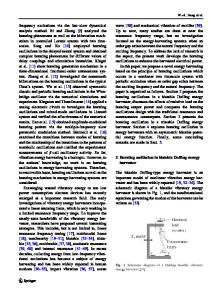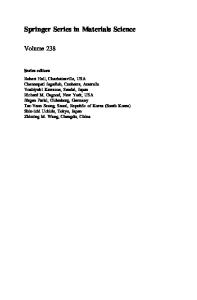Co-integration of RF Energy Harvesting
This chapter explores the possibilities for including an RF energy harvester with the previously presented TRX front-end. A fundamental problem that has to be resolved is the decoupling of the harvester from the TRX while using the same antenna. In the pr
- PDF / 1,013,497 Bytes
- 17 Pages / 439.37 x 666.142 pts Page_size
- 35 Downloads / 232 Views
Co-integration of RF Energy Harvesting
One of the main challenges in the implementation of Wireless Body Area Networks (WBAN) is to make their element nodes energy autonomous so that they can be solely supplied by harvesting techniques [79]. Because of the varying operation conditions of transceivers (TRXs) for WBANs, energy harvesters have to be combined with the appropriate circuitry for charging storage elements, such as rechargeable batteries or supply capacitors [65, 73]. This chapter covers both aspects and presents an RF energy harvester, including supply management circuitry, which can be added to the previously proposed 2.4 GHz Bluetooth Low Energy transceiver. Before discussing the possibilities to integrate RF energy harvesting, two important constraints have to be considered, i.e. the available RF input power levels and the characteristics of possible energy storage devices. Regarding the available RF energy, Visser et al. [134] have measured the ambient levels that can be expected in an office environment equipped with WLAN routers. According to their studies, the peak power density that can be expected is below 100 µW/m2 . Taking a look at the storage devices, solid-state thin-film rechargeable batteries provide a high energy density and low self-discharge currents [5, 6, 47, 56]. Nonetheless, such batteries usually require a minimum charging current on the order of a few tens of µAs [5, 6, 39]. Similarly, large supply capacitors with mF-capacitance, often referred to as super-capacitors, usually suffer from leakage currents on a similar order of magnitude [7, 74]. Hence, considering a supply voltage of 1V, charging a battery or supercapacitor requires a minimum DC power on the order of 25 µW [39] and, therefore, an incident RF power of about 100 µW (−10 dBm) is needed for RF energy harvesting if conversion losses are taken into account [65]. This excludes ambient RF energy as the sole source of energy, especially considering the small antenna sizes of wireless sensors [134, 136]. Nonetheless, in the close proximity of WLAN routers, which usually emit 20 dBm, sufficient power levels are present to charge the energy storage of a wireless sensor node. The advantage of such a charging scenario is that the sensor needs no connector for a wired charger. Energy harvesting by RF-DC conversion may be incorporated into a wireless node by adding a dedicated antenna [53, 65, 93] or, more elegantly, by re-using the
J. Masuch and M. Delgado-Restituto, Ultra Low Power Transceiver for Wireless Body Area Networks, Analog Circuits and Signal Processing, DOI: 10.1007/978-3-319-00098-5_5, © Springer International Publishing Switzerland 2013
87
88
5 Co-integration of RF Energy Harvesting
Fig. 5.1 Architecture of the wireless sensor node with RF energy harvesting
antenna of the TRX, as shown in Fig. 5.1. The latter facilitates system miniaturization but requires some kind of decoupling between the harvesting and communication operations. This can be accomplished by using two different carrier frequencies and a dua
Data Loading...











